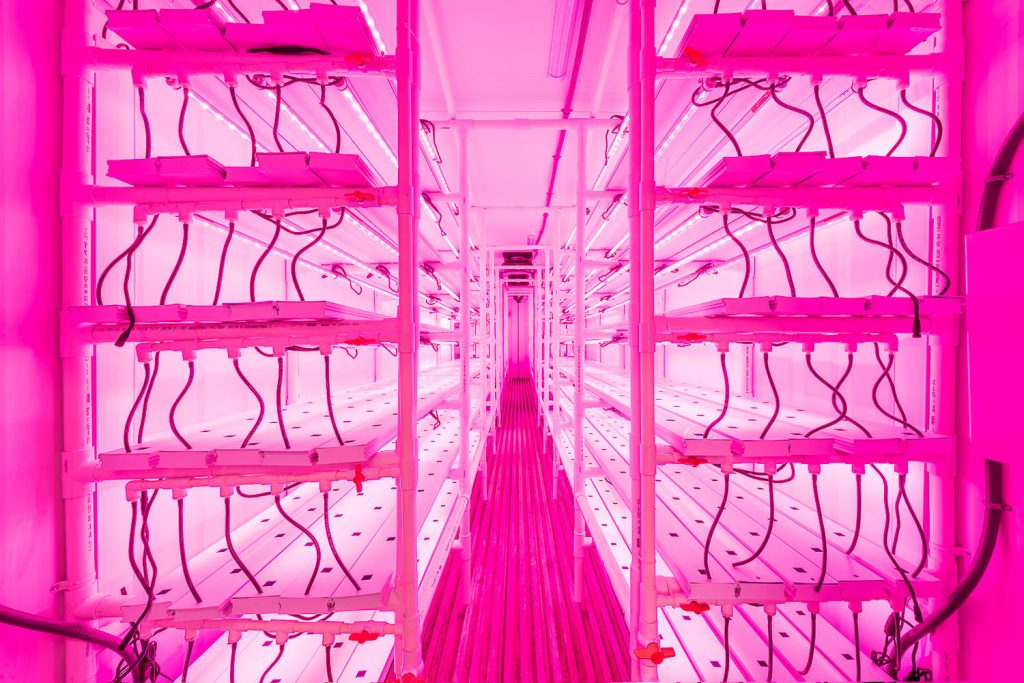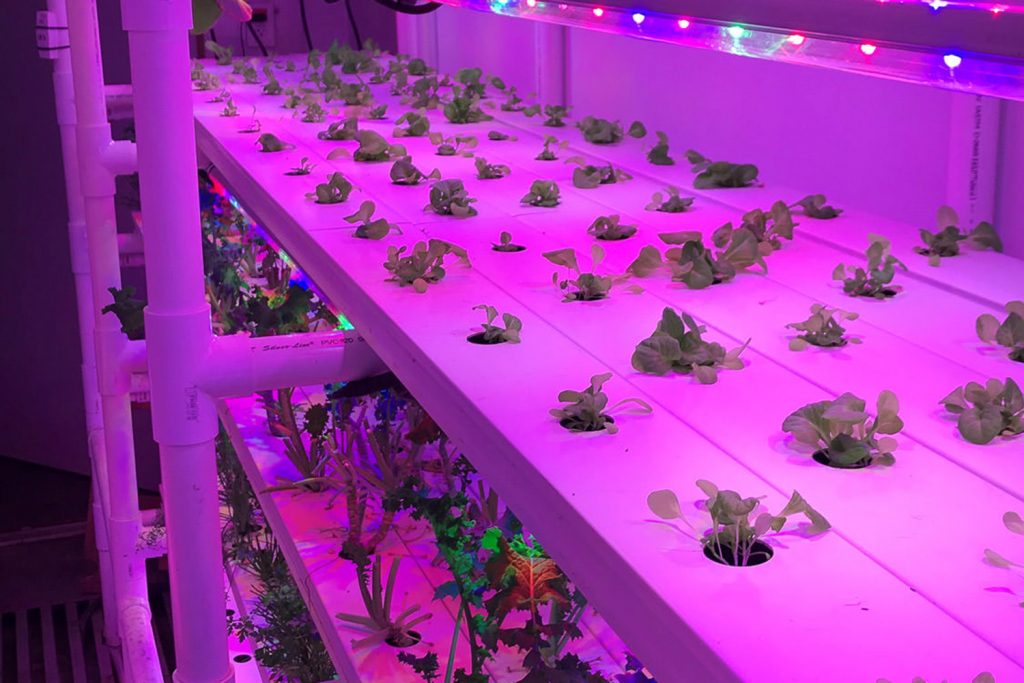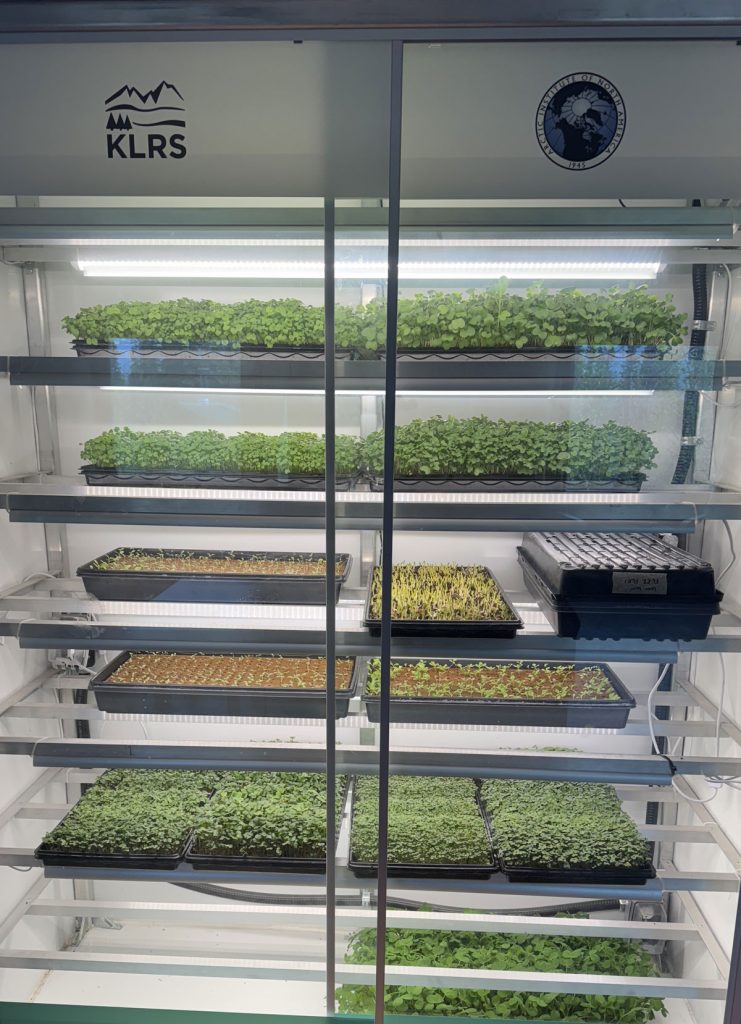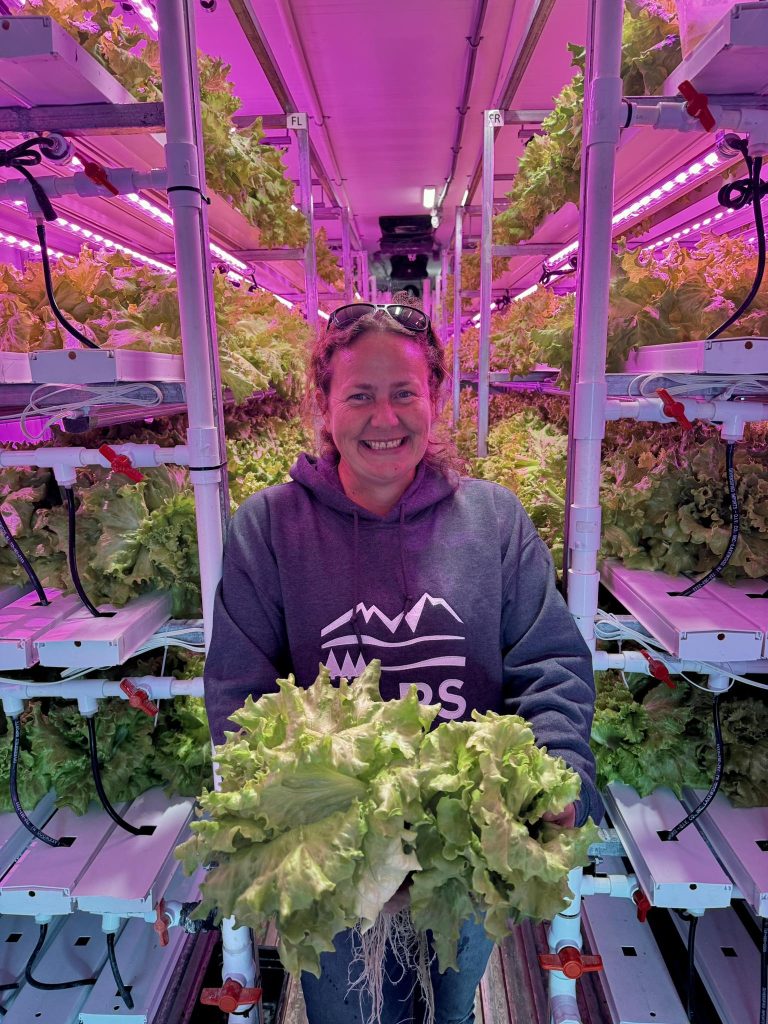The Ag1054 project “Off-Grid Containerized Agriculture in the North” is an AINA-led research project with Dr. Craig Gerlach as the Principal Investigator. Ag1054 uses a shipping container, formerly known as a CropBox, as a controlled environment for hydroponic (plants grown in nutrient-enriched water instead of soil) food production. The system has automated lights, pH levels, heating and CO2 and is completely off grid, powered by solar energy with diesel backup. The system can grow up to 700 individual plants (approximately 18,000 lb of fresh produce) at a time, providing crops like leafy greens, herbs, and fruiting plants. Experimentation with root crops such as carrots, potatoes, onions, and beets can also be done. The system is designed with harsh conditions in mind and comes with R60 insulation and an Arctic Entrance to provide more space to harvest and package produce.


The seeds are planted into dirt-free compostable squares and placed under specialized grow lights to get the seedlings started. Depending on the germination time for the specific plant they could be in this process from a couple of days to a couple of weeks. Once the seedlings have started to sprout, they are moved from the nurturing station to their own space within the unit where they will grow until harvest. Depending on the plant, this takes 1 – 4 weeks to produce crops such as spinach, lettuce, kale, strawberries, arugula. Harvesting is done by pulling the plant out and cutting off the bottom compostable square. Without any dirt, this process is clean and quick.

Plants were grown in the hydroponic unit during the 2021 and 2023 summer seasons. A full-time Agriculture Research Coordinator was hired in 2025 for the Ag1054 project, including operating the hydroponic system. Local operators from 2023 have stayed on the project in advisory roles to help begin operations and guide the direction of the Ag1054 project with respect to local communities. In May of 2025, the Ag1054 team focused on hydroponic infrastructure upgrades, preparing seedlings, and community engagement planning. A grow unit was utilized to yield Oriental mustard, yellow mustard, radish, speckled pea, green pea, and broccoli microgreens grown in soil, and to start hydroponics seedlings before transplanting them into the hydroponics unit in June.

By June 2025, the hydroponic unit was fully operational, with 900 lettuce, 40 cilantro, and 10 radish seedlings transplanted that continue to grow in nutrient-rich water. Hydroponic parameters such as temperature, humidity, nutrient pH, and electrical conductivity are measured daily. Kale, broccoli, tomato, and cucumber seedlings have also been transplanted into outdoor garden beds. The team aims to compare the nutritional value and growth parameters of plants from different growing systems (hydroponic, microgreens, and field-grown) by analyzing micronutrients, minerals, vitamins, and antioxidants.
